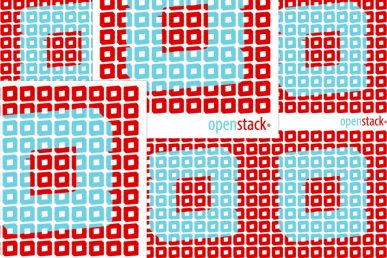Advancing Cloud Services Through a Hybrid Cloud
Intel® processors are known for their speed and innovation. Naturally they would expect no less of their own IT infrastructure.
Intel IT maintains a global and massive computing environment that supports more than 65,000 servers in 68 data centers and more than 95,000 employees who connect to Intel resources through more than 147,000 mobile devices.
To improve services to its internal clients, Intel implemented its first private cloud in 2010, delivering secure services and data on demand to mobile users through a shared, elastic infrastructure of compute, storage and network resources.
The private cloud allowed the company to develop a reliable, self-service portal that provides capacity when needed and removes IT as a bottleneck during critical projects and events. Through the new efficiencies and shared resources, Intel saved more than $9 million.
To build on that success, Intel looked to the community of open source products to utilize in the creation of their hybrid cloud. They selected OpenStack to help improve delivery of its services by splitting capacity and availability over a private and public cloud. OpenStack has since become the foundation of Intel’s improved private cloud environment in particular.
“Whether it’s internal or external, our end users need easy access to their applications and data in a secure fashion, anywhere and anytime, from any device,” said Das Kamhout, Intel principal engineer and IT cloud computing lead. “We have utilized OpenStack, with its open source community, to help us deliver this level of service with increased interoperability between our private and public cloud. In the process, we are working toward our goal of a federated, interoperable and open cloud as our standard way of providing services.”
Enabling Hybrid Architecture
Intel implemented OpenStack to advance a core set of infrastructure-as-a-service capabilities as an open and Hybrid cloud solution. Through the use of OpenStack’s common APIs, they’re making it easier for Intel’s internal end users such as application developers, application owners and IT operations staff to consume compute, storage and networking.
Intel was driven to an open cloud in large part by the consumerization of IT, as internal users who brought their own personal devices to work began to expect the same level of access to company resources, including applications, storage and connectivity.
“To get to this next level in our cloud evolution, we decided on a greenfield approach to the problem, looking at it as an opportunity to fundamentally change the way we build and expose our data center solutions as consumable services to our end users,” Kamhout said. “We knew this would be challenging if our IT infrastructure wasn’t built on open APIs.”
Intel needed an open cloud provider that would meet their expectations for consumable services and provide automated management for all data center components. They tried numerous solutions available in the industry including solutions they developed, before selecting OpenStack to augment their existing private cloud.
OpenStack is the fastest growing open cloud community, building software to power public and private clouds for a growing number of organizations like, PayPal, eBay, HP, CERN and Rackspace. The software controls and automates pools of compute, storage and networking resources to turn standard hardware into a powerful cloud computing environment.
Endorsing Open Source Solutions
Kamhout said some organizations are skeptical of open source solutions based on misconceptions of poor technical support, longer implementations or lack of regulations to control the quality of code. However, Intel has a long history of using open source software for its Design Grid.
Over the years, Kamhout said they’ve found open source solutions to include strong communities for support and documentation including administration guides and API content to help ensure a quick learning curve. He said that in their early experience with OpenStack, it is showing excellent results that are matching other wide scale open source projects.
“In our evaluation of OpenStack as an open source software, we found that it was not only a safe choice, but that it also matched well with our other large-scale computing requirements,” he said. “In addition, we saw compelling advantages in moving from proprietary solutions to open source, such as interoperability with multiple solutions and a faster, less expensive implementation.”
Intel also saw the benefit of OpenStack’s regular bi-annual updates. They are utilizing the six month cadence to accelerate the advances of their core, and are also striving for constant and continuous releases for consumable services that are outside of the OpenStack core.
An important piece of Intel’s OpenStack implementation is the use of Compute security groups for automated segmentation among tenants, as well as VM roles inside a single tenant. The separation provides for secure multi-tenancy and makes it easier to segment in a multi-tenant resource pool, avoiding the need to coordinate automation with an external firewall service.
OpenStack is also being utilized in Intel’s efforts to implement platform as a service (PaaS) as the next step for its enterprise private cloud. Kamhout said PaaS is needed to accelerate customer application development and promote cloud-aware application design principals.
“This PaaS environment will build on our successful infrastructure-as-a-service platform, using open source software to provide an environment featuring self-service, on-demand tools, resources, automation and a hosted platform runtime container,” he said. “We anticipate that PaaS will facilitate the creation of cloud-aware applications though templates, resource sharing, reusable Web services and large-scale multi-tenancy.”
With PaaS, Kamhout believes Intel will extend the value of its private cloud to more groups and uses, supporting its technology roadmap for using hybrid private and public clouds to increase scalability and reduce costs.
The company is spending less time on engineering the core IaaS solution and more time on higher-level service areas to promote the more advanced services their application developers need to build applications that increase end-user productivity. Kamhout empathized, “Fundamentally we’re trying to change the way we do IT, not just retrofit but connect all systems while minimizing proprietary API lock-in.”
“For us, the new Intel IT OpenCloud environment with OpenStack has reduced the amount of time it takes to provision services and automatically resolve issues,” Kamhout said. “We have been able to deploy a VM in just 5 to 10 minutes, provide faster self services to our customers, and offer a rich set of consumable services that are the foundation for our cutting edge SW developers. We are making numerous advances to make our OpenCloud the hosting platform of choice for our cloud developers and our traditional enterprise IT teams… we still have a few big milestones in front of us, but we are confident in the community to accelerate on this path together.”
INTEL
- http://www.intel.com
- Industry: Information Technology
- Headquarters: Shanghai
- Size: 1,001 to 5,000 employees
OpenStack Technologies Intel Uses
- Openstack Compute (Nova)
- Openstack Block Storage (Cinder)
- Openstack Object Storage (Swift)
- Openstack NetworkOpenstack Dashboard (Horizon)
- Openstack Identity Service (Keystone)
- Openstack Image Service (Glance)
- Ceilometer
About Intel
White Paper: Accelerating Deployment of Open Source Cloud
OpenStack Summit Video: Intel’s OpenStack Journey
__
Image credit: "Intel E5200 #1" by lungstruck
- Demystifying Confidential Containers with a Live Kata Containers Demo - July 13, 2023
- OpenInfra Summit Vancouver Recap: 50 things You Need to Know - June 16, 2023
- Congratulations to the 2023 Superuser Awards Winner: Bloomberg - June 13, 2023

)










